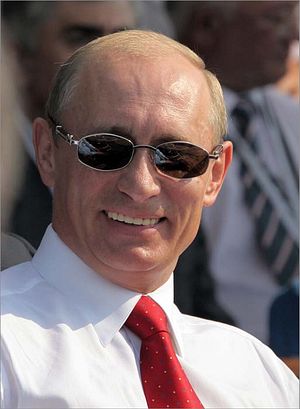A few defense and security links to kick off this week:
Russian President Vladimir Putin expands on his motivations for annexing Crimea last year in a preview for an upcoming documentary. Putin notes that Russia was “forced to start working on returning Crimea to Russia because we could not abandon this territory and the people who live there to the mercy of fate, to be crushed by nationalists.” “It wasn’t us who committed a coup d’etat, it was done by nationalists and people with extreme views, they were given support,” Putin said. “But we are here, this is our land,” he concludes.
IHS’s newly released Global Defense Trade Report is definitely worth checking out. I reported on one of the report’s major findings, which was that Saudi Arabia overtook India as the world’s top defense equipment importer. However, the report highlights several other developments relevant to the Asia-Pacific region. Notably, South Korea is described as the “rising star” of Asia-Pacific defense exporters. China, additionally, was the third largest defense importer in 2014, up from fifth place, suggesting that its military modernization drive may not be as driven by indigenous technology as previously thought. Russia’s story looks interesting as well. After a record 2014 in which it exported some $10 billion in equipment, a 9 percent increase over 2013, Russia is expected to “face challenging times,” owing in part to the global fall in oil prices and the country’s general economic malady. In a less surprising finding, the report notes that the United States “supplied one-third of all exports and was the main beneficiary of growth.”
Over at Defense News, Awad Mustafa explores the possibility that the joint Indo-Russian fifth generation Su-35 fighter could end up being a more attractive offering for the cash-strapped Indian Air Force than Dassault Aviation’s Rafale. The idea remains highly speculative, with the report noting that no Indian officials were willing to confirm any deal for a potential Su-35S (the ‘S’ indicating a stealth specification). Still, given the gridlocked negotiation process over the Rafale, India may need to consider other options. The Su-35 likely won’t be high on the list. Other top competitors for India’s medium multi-role combat aircraft (MMRCA) contract, apart from the Rafale, included the Eurofighter Typhoon, the Boeing F/A-18E/F Super Hornet, the Saab Gripen NG, the Mikoyan MiG-35, and the Lockheed Martin F-16IN Super Viper. With the Rafale’s ballooning unit costs and India’s spending constraints, a lower priced fifth-generation offering from the Russians is an intriguing possibility.
The New York Times takes a look at the Japanese Self-Defense Forces’ regular sorties against intruding foreign aircraft off the coast of Okinawa:
“At least once every day, Japanese F-15 fighter jets roar down the runway, scrambling to intercept foreign aircraft, mostly from China. The Japanese pilots say they usually face lumbering reconnaissance planes that cruise along the edge of Japanese-claimed airspace before turning home. But sometimes — exactly how often is classified — they face nimbler Chinese fighter jets in knuckle-whitening tests of piloting skills, and self-control.”
Long regarded as one of Asia’s likely flashpoints, the air over the East China Sea could become the site of an initial skirmish between Japanese and Chinese forces.
Two reporters at the Associated Press reflect on the United States’ firebombing of Tokyo in the final months of the Second World War. The incident, while not remembered with the same solemn reverence as the atomic bomb attacks on Hiroshima and Nagasaki, claimed the lives of over 100,000 Japanese. Strategic bombing, a strategy normally associated with total war, is not likely to make a return in the Asia-Pacific, but was hugely influential during the Second World War.
Pakistan tested a nuclear-capable ballistic missile on Monday, shortly after foreign secretary-level talks with India resumed. The missile in question was the Shaheen III surface-to-surface missile.

































